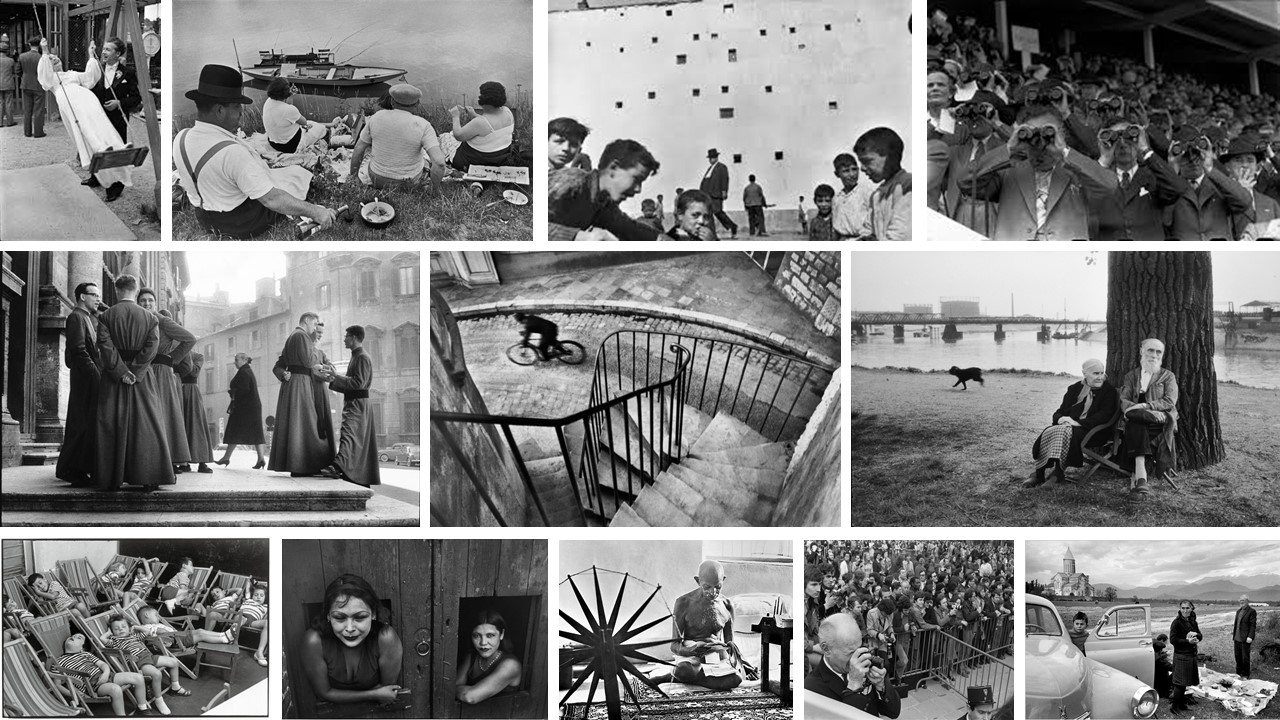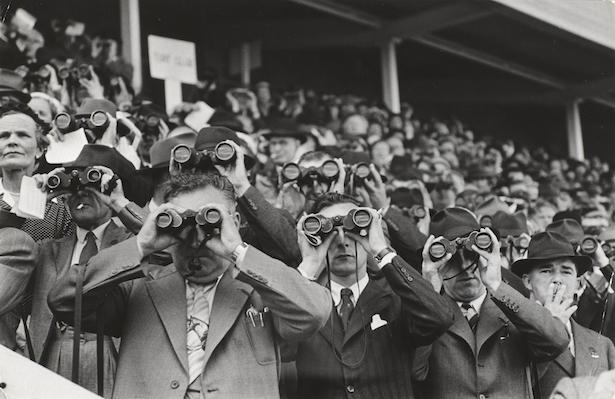
Henri Cartier-Bresson was a french humanist photographer considered a master of candid photography, and an early user of 35mm film. He pioneered the genre of street photography and viewed photography as capturing a decisive moment. Cartier-Bresson was once of the founding members of Magnum Photos in 1947. After trying to learn music, Cartier-Bresson was introduced to oil painting by his uncle Louis, a gifted painter. In 1927 Cartier-Bresson entered a private art school and the Lhote Academy. Lhote’s ambition was to integrate the Cubists’ approach to reality with classical artistic forms. Although Cartier-Bresson became frustrated with Lhotes’s “rule-laden” approach to art, the rigorous theoretical training later helped him identify and resolve problems of artistic form and composition in photography. The Surrealist movement, founded in 1924, was a catalyst for this paradigm shift. Cartier-Bresson began socializing with the Surrealist at the Cafe Cyrano, in the Place Blanche.In 1929, Cartier-Bresson got his first camera presented by Harry Crosby, who was an American expatriate. In the 1931, he was inspire by a Hungarian photojournalist, Martin Munkacsi, showing three naked young African boys, caught in near silhouette, running into the surf of Lake Tanganyika. Cartier-Bresson then acquired a Leica camera with a 50mm lens in Marseilles which would accompany him for many years.
Magnum Photo Agency:
In early 1947, Cartier-Bresson, with Robert Capa, David Seymour, William Vandivert and George Rodger founded Magnum Photos. Capa’s brainchild, Magnum was a cooperative picture agency owned by its members. The team split photo assignments among the members. Cartier-Bresson would be assigned to India and China. He achieved international recgonition for his coverage on Gandhi’s funeral in India in 1948 and the last stage of the Chinese Civil War. He covered the last 6 months of the Kuomintang administration and the first 6 months of the Maoist Peoples Republic. He also photographed the last surviving Imperial eunuchs in Beijing, as the city was falling to the communist. In Shanghai, he often worked in the company of photojournalist Sam Tata, whom Cartier-Bresson had previously befriended in Bombay. From China, he went on to Indonesia, where he documented the gaining of independence from the Dutch. In 1950, Cartier-Bresson had traveled to the South India. He had visited Tiruvannamalai, a town in the Indian State of Tamil Nadu and photographed the last moments of Ramana Maharishi, Sri Ramana Ashram and its surroundings.[16] A few days later he also visited and photographed Sri Aurobindo, Mother and Sri Aurobindo Ashram, Pondicherry.

The photograph was taken in Tipperary County, Munster, Ireland at Thurles in 1952. The photograph was captured at a horse race track. Cartier-Bresson has taken the photograph in black and white which shows the shadows and contrast a lot clearer than if it was taken in colour. Natural lighting was used to take this photograph. The camera is positioned at a relatively low angle, which allows Cartier-Bresson to capture the people in the background and creates a depth of field. The people in the foreground are in focus and the people in the background are out of focus, which means that the photo was taken at a low aperature maybe a F4 or F5.6. The shutter speed used to take this photo is likely to be quick as the photograph has no blur. Also the ISO used in this photograph must of been quite low as there is no noise created by the light. The concept of this photograph might have been to capture what times were like in that era, and how it could change over time. Cartier-Bresson could have wanted to send a message out through this photograph, maybe that they should stop these type of races.
